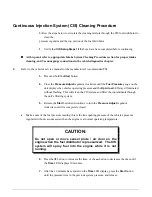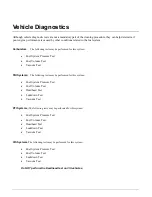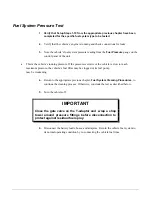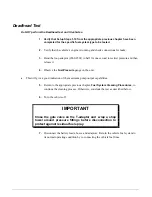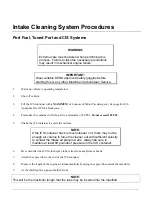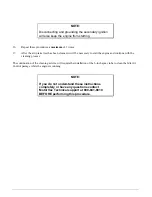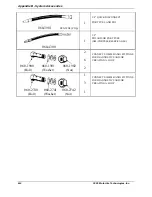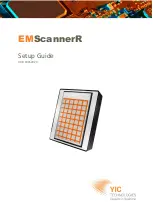
•
If the above procedures do not stop the leakdown, bend both adaptors simultaneously. If a leakdown
is still present, the leak is probably the result of one or more injectors leaking. This problem is
generally dirt-related and should be resolved by the cleaning process.
5.
Return to the appropriate previous chapter,
Fuel System Cleaning Procedures
, to
continue the cleaning process. Otherwise, conclude the test as described below.
6.
Turn the vehicle off.
IMPORTANT
Close the gate valve on the T-adaptor and wrap a shop
towel around pressure fittings before disconnection to
protect against residual fuel spray.
7.
Disconnect the battery leads, hoses, and adaptors. Return the vehicle fuel system to
its normal operating condition by re-connecting the vehicle fuel lines.
Vacuum Test
This test should be performed in conjunction with the cleaning process.
1.
Verify that Setup Steps 1-10 from the appropriate previous chapter have been
completed for the specific fuel system type to be tested
.
2.
Verify that the vehicle’s engine is running and check connections for leaks.
3.
Attach the vacuum hose from the unit to a manifold vacuum source on the vehicle and
leave it in place throughout the cleaning process.
4.
Make a note of the reading on the
Vacuum
gauge before you begin the cleaning
process and again after the process is complete.
•
The
Vacuum
gauge on the unit has been added to allow
before
and
after
confirmation of the positive
results of the
MotorVac CarbonClean System
cleaning process without the use of any other
diagnostic equipment. The readings on the
Vacuum Pressure
gauge should indicate a substantial
improvement in the engine performance after the cleaning process is complete.




